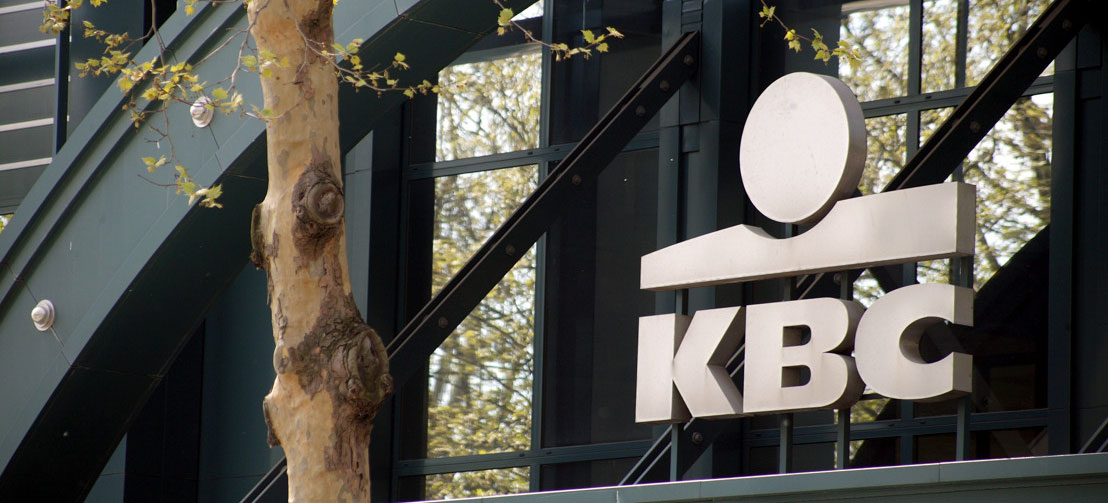 Apr
02
2020
Apr
02
2020
Manage your mailbox with Machine Learning? Yes, you can!
 AMS Advocaten is an ambitious law firm where the lawyers open their mailbox with pleasure. Operating from a well-organised e-mail environment, the office works and communicates quickly with clients. A conversation with Hidde Reitsma, lawyer and partner of AMS Advocaten about Machine Learning. ‘If you do not invest in ICT tools now that truly support you, then soon it will be too late.’
AMS Advocaten is an ambitious law firm where the lawyers open their mailbox with pleasure. Operating from a well-organised e-mail environment, the office works and communicates quickly with clients. A conversation with Hidde Reitsma, lawyer and partner of AMS Advocaten about Machine Learning. ‘If you do not invest in ICT tools now that truly support you, then soon it will be too late.’
AMS Advocaten is a modern office. The office premises feature a glass façade and as a result exude transparency. The lawyers are dressed in a fashionable, yet professional manner. The office has a modern design and is equipped with the latest facilities. And the automation? That is scrutinized continuously. Can something be done more efficiently? Then AMS Advocaten will implement it. This also applies to the Machine Learning (ML) solutions by Epona Legal to better utilise e-mail traffic and the document management archive.
Overflowing mailbox
‘As a lawyer, you encounter the same problem every day: You’ve been out of the office for half the day. You settle behind your desk and are faced with an overflowing mailbox. Where to begin? The daily e-mail management requires a great deal of time. Valuable time we would rather use for our clients. Luckily, a while back, Bart (from Epona Legal) showed us that there is a different way,’ Hidde explains.
Last year, the office performed a test with ‘predictive e-mail filing’ utilising ML by Epona Legal and now is fully convinced. ‘The computer helps us to keep the inbox well-organized. Working every day with a clean slate is a delight. It gives a sense of peace.’
Simple Machine Learning applications
Bart van Wanroij, Epona Legal, ‘AMS Advocaten is an innovative law firm that due to its size – and ambitions – can and wants to respond quickly to technological developments. As a software company, it is a joy to work with such an office.’ Quite a few years ago, AMS Advocaten implemented DMSforLegal in combination with Office 365. Currently, the office is implementing a number of ML functions, which can be utilised within a document management environment. Simple applications that can simplify the work of a lawyer to a considerable degree.
‘It is impressive that the system has such a high success rate in regard to the automatic filing of documents.’
AMS Advocaten is currently working with two ML applications. The first is ‘predictive e-mail filing’. Here, suggestions are made for archiving e-mail messages, as a result of which the problem of an overflowing inbox is a thing of the past. The second application – which currently is in its testing phase – is in regard to the searching and classification of documents. Who wouldn’t want the computer to handle the classification of documents for you? Whether in regard to an NDA or a share purchase agreement: the system recognises it as such and classifies it accordingly. In this manner, not only is archiving simplified, but also file retrieval. When we ask Bart about the costs – which are bound to be very high – he replies, ‘You rent additional server space for a few euros a month, that is all.’
High succes rate
Hidde continues, ‘We are happy to have entered the testing grounds of Epona Legal. Our ICT infrastructure, i.e. our backbone, is state of the art. All parameters were set to start working with ML. Why would you then not do it? It is impressive that the system has such a high success rate in regard to the automatic filing of documents. Of course, we have final approval, but it is fantastic that the system handles so much of the manual labour and brainwork.’
The Next Step
When we ask Hidde about ‘The Next Step’ to be taken by the office in regard to ML, he replies, ‘We took the next step with great care.’ Albert Jan Wonnink, consultant of Epona Legal, addresses this, ‘The Machine Learning tool has by now been fed with thousands of dossiers. It is able to automatically classify many types of documents. Take due diligence cases as an example. Here, a great deal of paperwork is involved in each project. ML ensures that all new documents and all existing files in the archive can be searched by means of OCR (text recognition in images or PDF files). Then the real fun begins. Epona Legal analyses and classifies these documents, after which the contents can be utilised for follow-up projects. Quickly and incredibly effective. The greatest thing? That we are able to quickly set up these types of applications in a test environment. In this manner, each office can start using it within a very short time.’
‘A due diligence project that usually requires several working days, can be reduced by days with the use of Machine Learning.’
Timely investment
Hidde, ‘We are really looking forward to the results of this in our practice. Usually, a due diligence project requires several working days. We expect that we will be able to reduce the lead time by several days with the use of this tool. And that practically at no cost. I firmly believe that if you as a lawyer fail to invest your time in these types of tools, then others will not. As a consequence, you will be passed by lawyers that are able to do the work more accurately, faster and cheaper. We’d rather be the front runner ourselves.’




